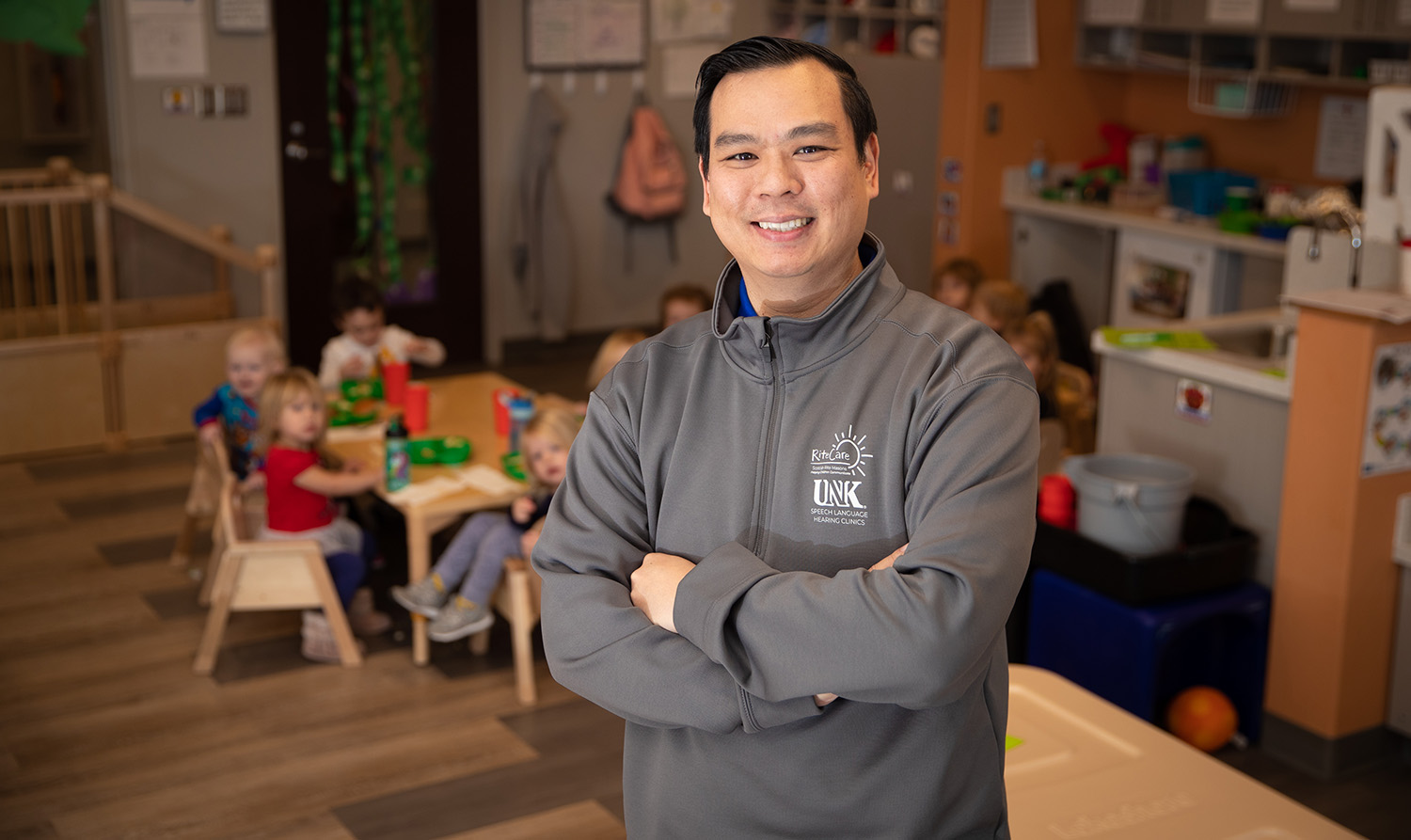
LINCOLN – Philip Lai, associate professor and graduate program chair in the University of Nebraska at Kearney Department of Communication Disorders, and HyeonJin Yoon, research assistant professor in the Nebraska Center for Research on Children, Youth, Families and Schools, are part of a team representing all four University of Nebraska campuses participating in a collaborative research project to better understand social interaction in the brain.
Funded by a University of Nebraska Collaboration Initiative Preliminary Data and Application Preparation Grant, Lai and Yoon are gathering data through standardized questionnaires, interviews, video recordings and monitoring of neural activity in mothers as they interact with their children.
Data will be gathered at the Neuroimaging for Language, Literacy and Learning Laboratory (NL3), directed by Yingying Wang, associate professor of special education and communication disorders, specializing in advanced neuroimaging techniques.
Along with Lai, Yoon and Wang, other team members include Amanda Zangrillo, associate professor and department director of the Severe Behavior Program at the University of Nebraska Medical Center; and Yiwei Zhang, assistant professor at the University of Nebraska at Omaha.
The idea for the project came after Lai and Yoon connected at a University of Nebraska Collaborative Initiative meeting two years ago. Once the team was put together for the project, they applied for funding through the collaborative with the help of the Nebraska Academy for Early Childhood Research (NAECR).
“NAECR really facilitated our collaboration,” Yoon said.
For the pilot study, mother-child pairs from 12 families — six with children with autism spectrum disorders, six with typically developing children — will visit the NL3 lab for data gathering.
Children are between ages 4 and 8.
During their three-hour visit, mothers will be fitted with a functional near-infrared spectroscopy (fNIRS) cap, which measures brain activity. For a 20- to 30-minute play session, the mother and child will play as they do at home, as the fNIRS cap measures the mother’s brain activity. After the play session, mothers focus on a white cross on a black computer screen for about 10 minutes, with the fNIRS cap still recording.
Researchers will compare brain activity recorded while looking at the cross on the screen with measurements gathered during play time.
The team is particularly focused on language spoken between the mother and child during their social interaction, including language production and quality, and the amount of language between the pair.
“We also want to compare those activities between families with a child with autism versus a typically developing child,” Lai said. “We want to see the difference in brain activity.”
After data is gathered for the pilot project, Lai said, the next step is to secure external funding for a larger-scale, multi-year study with more families.